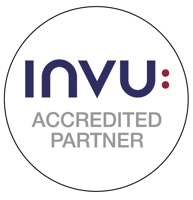Last month INVU updated their series 6 platform to 6.20. Whist INVU’s previous update introduced...
How Document Management Supports Compliance
Last month PacSol published an article on compliance which gave a few examples of how a document management system can be utilised to relieve the pressure on an organisation. It was quite long. If you are interested in the details of last month’s article, you’ll find it here. For this month, in a continuation of the theme, here is a lighter summary on how a document management system supports compliance.
Defines Roles & Responsibilities
By actively granting and restricting privileges to users, groups or job roles within a document management system, your organisation can ensure only those entitled to perform actions with content can. It also ensures the right persons have responsibility for the management of the content whilst preventing unauthorised usage of information.
Restrict User Access
Allow viewing, index editing but restrict export or printing (as an example). Allow access to only certain document types (folders / cabinets) or actively deny access to the highest security documents. The security model in a document management system is active - both positive and negative attributes can be applied with the more powerful ‘deny’ usually being dominant when a conflict arises.
Supports Fraud Prevention
Through audit logging, security activity reports and version control (history), organisations can ensure (and prove) that content stored in the platform is not only correct but also untampered.
Maintains Version control
With often geographically separated teams working on documents (occasionally simultaneously but also sequentially) version tracking and change logs are essential. Most document management systems force version control, preventing any user from simply overwriting content and protecting the organisation from mistakes or malicious intent. Some platforms even allow direct collaboration on content without first exporting.
Creates Audit Trail
Through a combination of audit logs, version control and reporting, the full lifecycle of any stored content can be reviewed with a few simple actions - efficiently and accurately. Should external auditors be required for the process, subsets of data can be quickly prepared (as searches) and even restricted access to auditors themselves granted in the short term.
 A document management system makes it simple to achieve compliance for all document-based processes. There are further potential enhancements to document control depending on the system in place (such as e-signatures, approval stamps, third party integrations etc), however all systems at their core meet the criteria outlined above.
A document management system makes it simple to achieve compliance for all document-based processes. There are further potential enhancements to document control depending on the system in place (such as e-signatures, approval stamps, third party integrations etc), however all systems at their core meet the criteria outlined above.
Still got a department using a shared drive, un-indexed cloud storage or similar non-regulated space? Contact PacSol and see how simple it would be to bring that content under control and release its valuable data potential whilst protecting your organisation.
 Toby Gilbertson, Director of Operations. August 2023
Toby Gilbertson, Director of Operations. August 2023
#pacsoluk #documentmanagmentsystem #compliance #digitaltransformation




